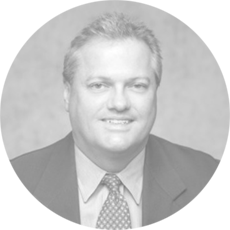U.S. property and casualty insurers will see some relief in the coming year following a rough 2023 as a personal auto line recovery contributes to statutory profit improvement, according to Fitch Ratings in its 2024 sector outlook report.
Fitch Ratings’ holds a neutral fundamental sector outlook for the U.S. P&C insurance sector, and for both the commercial and personal lines sector in 2024.
The sector outlook considers the influence of underlying fundamentals foreseen for the coming year on financial performance relative to results in 2023. The industry broadly maintains capital strength to support obligations and withstand significant adverse experiences.
Overall statutory performance in 2023 suffered from continued weak auto insurance performance and above-average catastrophe losses from a wide number of convective storm events, leading to a larger 2023 statutory underwriting loss relative to 2022, with a combined ratio projected at 103%, and an estimated 15% decrease in statutory earnings, despite continued strong written premium growth.

Projections for the year include continued strong industry premium growth, with improvement moderated by a combined ratio and a return on surplus of approximately 5% that is still below historical norms.
The outlook for the individual commercial and personal lines sectors are neutral as well. Meager financial results in 2023 reflect larger year over year underwriting losses and lower statutory earnings, driven by poorer personal auto and homeowners performance.

Following two years of large underwriting losses, auto results will show more material improvement as rate increases take hold and claims severity trends moderate, though a return to segment underwriting profits is less likely
Jim Auden, Managing Director Fitch Ratings
Countering the auto rebound are continued challenges P&C insurers are facing in managing catastrophe exposures and loss-cost uncertainty in many segments amid higher inflation and growing claims litigation activity and costs.
The commercial lines sector continues to generate underwriting profits. Sector underwriting gains may narrow in 2024, but pricing trends are anticipated to remain largely positive. Property and commercial auto lines remain as segments with greater performance uncertainty.
Industry performance is anticipated to improve in 2024, fueled by better personal auto performance as rate increases take hold and claims severity trends moderate, and growth in investment income from higher yields.
Still, the market combined ratio is projected at slightly over 100% for 2024. The industry return on surplus (ROS) is projected to remain below historical norms at approximately 5% in 2024, compared with 3% in 2023.
The commercial lines sector is expected to continue to generate an underwriting profit and earnings stability in 2024.

Claims cost volatility from inflation, macroeconomic uncertainty and higher litigation activity adds to underwriting and loss reserve risk. Signs of a broad softening market are not evident, despite over four consecutive years of rising premium rates.
Natural catastrophe losses were above prior norms in 2023 despite a respite from large hurricane events due to an elevated number of convective storm events.
The U.S. is experiencing its costliest year ever in 2023 for severe convective storms, with insured losses from these events exceeding $50 bn through the October, according to the Insurance Information Institute.
“Primary Insurers are likely to retain a higher piece of catastrophe losses going forward as recent reinsurance renewal periods led to notable increases in catastrophe reinsurance attachment points for many insurers,” said Auden.
Severe convective storms are among the most common, most damaging natural catastrophes in the United States.
The result of warm, moist air rising from the earth, they manifest in various ways, depending on atmospheric conditions – from drenching thunderstorms with lightning, to tornadoes, hail, or destructive straight-line winds. Recent years have seen an increase in organized lines of thunderstorms with widespread damaging winds, known as derechos.



 by
by 


